#urban greenspace
Video
youtube
Donor Impact: West Virginia University Core Arboretum
Important message here on public involvement in supporting and growing community greenspace. Over the years, Core Arboretum has evolved from a learning space for WVU students to a community hub and resource for nature programming and outdoor activities, connecting residents to the value of urban greenspace for everything from habitat conservation to personal health and well-being. As the existential threats to our last remaining urban greenspaces from irresponsible development and climate change continue to mount, greater community involvement and planning is needed to protect these precious places. The current battle to preserve greenspace in Atlanta from “cop city” is a prime example of what happens when city planning fails to involve local communities in addressing competing priorities for development and conservation.
14 notes
·
View notes
Text


The next B & G Micro fest is April 29th!!
I’d like to thank The Wilderness Society for giving me a grant in order to make these resource gatherings happen 👍🏾👩🏾🌾💚
7 notes
·
View notes
Text
2023 City Nature Challenge
2023 City Nature Challenge

View On WordPress
#animals#backyards#birds#busstops#City Nature Challenge#fungi#George Genereux Afforestation Area#George Genereux Urban REgional Park#grasses#Greenspace#lichen#mushrooms#Nature#parks#plants#reeds#Richard St. Barbe Baker#Richard St. Barbe Baker AFforestation ARea#Saskatchewan#Saskatoon#snails#spiders#trees#wildlife
2 notes
·
View notes
Text
blog question 1
Our "ideal" city would be walkable with good public transportation, clean area, kept up area with good things around like commercial stuff, entertainment, etc. Having all these things within the city makes it very useful for the people living within the area. Similar the the garden city concept the city should have lots of well kept easily accessible green space. Green space is really important within an area which brings in different useful ways to help the city look and work better. The city should not be inhumane and overbearing in scale like Le Corbusier's tower cities.

Comparing these different types of using the land area are both seen in the world. Normally the tall city building look (Le Corbusier's towers) are seen more of work areas while garden cities are more of the housing area look, due to the welcoming clean look.

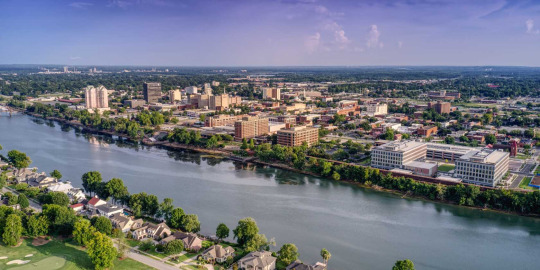
This neighborhood which is in Augusta, Georgia has a wide variety of needed things within an area. The area is a very mixed use of the area which makes it a lot easier and planned out to everyone needs.
1 note
·
View note
Text
Ecological Services Also Exist in Urban Areas
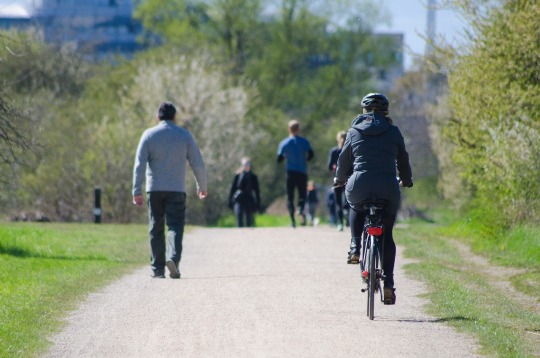
Park Life. Pixabay.
Increasing urbanization of humans does not change the fact that we are still dependent on nature for survival. Within an urban area, numerous different ecosystems exist, providing many ecological services which benefit the human population that call the area home. These services contribute to public health, and increase the quality of life of citizens. These urban ecosystems include street trees, lawns/parks, urban forests, cultivated land, wetlands, lakes/sea, and streams.
Here are six ecological services that have an important role in urban areas:
Air filtering
Vegetation helps with air pollution caused by transportation and the heating of buildings by filtering pollution and particulates from the air. The capacity to do that increases with leaf area, and due to the large surface area of needles, coniferous trees have a larger filtering capacity than deciduous leaves. The capacity is greater too because the needles are not lost during the winter when air quality is at its worst.
Micro-climate regulation
Water areas in a city help to balance temperature changes during summer and winter. City trees can lower hot summer temperatures by consuming heat energy in the process of transpiration. Vegetation can also decrease energy used for heating and cooling by shading homes and reducing wind speed.
Noise reduction
Noise from traffic and other common sources creates health problems for some people in urban areas. Lawns, rather than pavement, decrease noise levels, as do hedges and shrubs. Increased areas with soft ground and plants not only reduces noise levels, but also protects against the visual traffic, making it less disturbing.
Rainwater drainage
Vegetation, with its soft surfaces, allows water to seep through; the vegetation takes up water and releases it into the air. Urban areas with soft ground that allows rainwater drainage save cities the costs associated with building and maintaining storm water drainage systems.
Sewage treatment
In some cities, natural systems such as wetlands are being used experimentally to treat sewage water. Wetland plants and animals can take in large amounts of the nutrients and slow down the flow of sewage, allowing particles to settle on the bottom. Very large amounts of both nitrogen and phosphorus can be held in wetlands, lowering costs of sewage treatment.
youtube
Recreational/cultural values
One of the most valued ecological services provided in cities are the opportunities of play and relaxation. Natural environments and green spaces such as parks are known to help lower people’s stress levels and help urban citizens increase their physical and mental well-being. Streams provide opportunities to fish and pass on hobbies and traditions.
While each ecosystem within an urban area provides specific services, they all contribute to climate regulation. Better understanding of the value of these services could lead to expansion of these areas in cities.
Bolund, P., & Hunhammar, S. (1999). Ecosystem services in urban areas. Ecological economics, 29(2), 293-301.
#academia#flowers#plants#science#teaching#ecologicalservices#urban areas#environment#greenspace#Youtube
1 note
·
View note
Text
What is an ideal city... to us?
For us at PeoplePlan!t, an ideal city would include a plethora of greenspaces and public spaces along with the requirement of public transportation, whether it be underground train, bus, and light rail to minimize the overuse of automobiles that we see in cities today. We would also like the attractiveness of a geometrical design, embracing the necessity of skyscrapers and other commercial aspects whilst excluded from residential dwellings.

The descriptions of our ideal city as depicted above can be traced back to the visionary architects, Le Corbusier, and Frank Lloyd Wright. Corbusier’s vision incited a city that was comprised of urban greening, population control, residential and commercial separation, walkability, and public transportation. While Wright’s visions were car centric, geometrical, planned to house millions, and wanted to construct a multitude of skyscrapers on a primarily paved surface. Anyone can tell that these two visons clearly oppose one another. That is why we believe with the proper incorporations, we can combine the two ideas into a city that is green and protects the environment, while also continuing to thrive as the city grows!!
1 note
·
View note
Text

The One Tree.
Well. The one at the corner of my block, anyway. And make no mistake: it is magnificent. It is the soul and the vibe of the intersection. Woe betide the developer who ever convinces council something commercial should go there. They are fast tracked for a kick in the taint if I ever find out about it. Don't touch our trees!
1 note
·
View note
Text
Yards in and of themselves aren't actually that bad, they can help to provide urban greenspace, it's just lawns that really suck, well lawns and the absurd size of the American Yard
535 notes
·
View notes
Text
How Nature Makes Us Feel Better
A shiny new study just came out detailing nature’s restorative effects, specifically on children and adolescents. It’s an in-depth literature review that not only demonstrates the effectiveness of nature as a therapeutic tool, but supports the future use of standardized measures to make the study of ecopsychology, ecotherapy and similar practices more scientifically rigorous. The study is just the latest in a long line of research showing how nature makes us feel better.
Earlier this year, I wrote an article on nature’s effects on the brain. Mobile EEGs are able to record changes in the brain as study participants spend time outdoors, and multiple studies use their readings. This is an example of a more quantitative approach to studying the restorative effects of nature, in which certain metrics can be measured reliably over and over again.
But what, exactly, happens when nature makes us feel better? Let’s look at some of the measurable effects. (Note: I drew from a previous article of mine from several years ago for the following material, though it was a great opportunity to check in on more recent research.)

Physical Ways Nature Makes Us Feel Better
Increased Immune Function: This extensive literature review shows that time spent in nature improves immune function on a variety of levels. Studies show how time in nature can increase the number of white blood cells that help fight infection and other ailments: in senior citizens after exercising, and after forest bathing.
Improved Vision: Children are less likely to develop myopia (near-sightedness) when they spend more time outside. This study suggests that dopamine is a key player in this phenomenon. A literature review further supports the connection between eyesight and outdoor time.
Lower Blood Pressure: A 2020 study suggests that exposure to the UV light in sunshine can lower blood pressure. So can thirty minutes of outdoor activity (along with lowering symptoms of depression.) Forest bathing was shown to lower blood pressure in older people in a 2012 study. This study posits that nature’s effect on blood pressure may be accomplished through calming the sympathetic nervous system.
Improve Socioeconomic Conditions: Decreasing poverty is an incredibly important part of increasing intergenerational mobility in socioeconomically disadvantaged people. This 2019 study suggests that access to greenspace can reduce the chance of poverty by boosting creativity, emotional regulation, and academic performance. Another study links boosts in creativity with forest bathing, one particular use of greenspace. Moreover, greenspaces can also lower crime rates, another significant factor in improving conditions in disadvantaged communities.
As if all that wasn’t enough, this massive, comprehensive literature review has evidence that time in nature can not only lower blood pressure and resting heart rates, but also reduce the chances of heart disease, diabetes, and overall mortality. Speaking of mortality, here’s a study looking at how greenspace in particular can lower mortality in a stable community. And another one looking at lower mortality rates in urban areas with greenspace. And in case you thought that the effects of outdoor exercise was all about the exercise and not the setting, here’s one showing that mortality rates are lower when people specifically walk in greenspace.
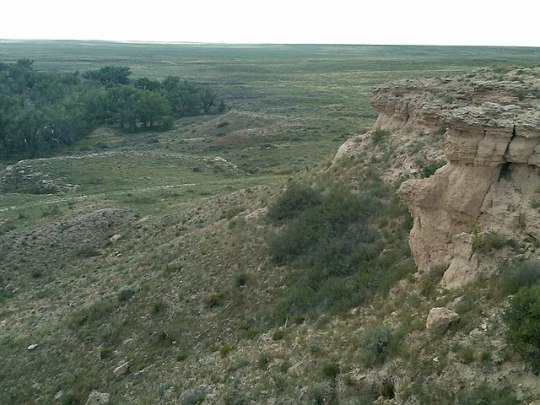
Psychological Ways Nature Makes Us Feel Better
Reduced Rumination: Psychological rumination is basically when your mind gets stuck on some worry, painful memory, or other negative thoughts. It’s commonly associated with anxiety and depressive disorders. Unlike meditation or problem-solving thoughts, rumination doesn’t actually help a person make any changes to their distress, and may actually make it worse, like incessantly poking at a bruise.
Time in nature has been shown to reduce rumination in study participants. A 2021 study demonstrates that spending a dedicated amount of time in nature each week significantly reduces rumination as well as negative affect (in other words, a bad mood.) You don’t need to spend hours out there, though; a half an hour may be enough to see a difference. It needs to be actual nature, though, as this 2018 study shows; people who viewed a slideshow of nature photos did show an improvement in affect, but no reduction in rumination.
Cognitive Function: Time in nature can help sharpen our mental capacity in a number of ways. This thorough, multidisciplinary literature review explores several of the ways nature is restorative, and also suggests some ways to further categorize these effects to increase consistency in future research. Hospitals that have significant greenspaces are easier to navigate due to improved spatial awareness, mood, and other factors. Cognitive performance can even be boosted simply by listening to the sounds of nature. Working memory may be improved through time spent in nature. Time outside can counteract attention fatigue, that feeling when your mind is so tired you just can’t focus. Can’t get outside? Even looking out a window can improve attention. And it may only take a very short period of time to start getting positive cognitive effects.
Stress Reduction: Stress can seriously strain cognitive functioning, from attention to memory and more, never mind overall mental well-being. So reducing stress is a good idea all around. A twenty minute walk in nature was shown to lower levels of cortisol, a stress-related hormone. A 2022 study compared the activity of the amygdala–sort of the brain’s panic button–before and after time spent in nature. The amygdala was much less active after a walk outside. Most studies have participants engage in a specific activity over a set amount of time and often in the same location to help remove confounding variables. However, a 2019 study that allowed participants to set their own parameters for where and when they would have their nature experiences showed that they still had significant drops in cortisol after being outside.
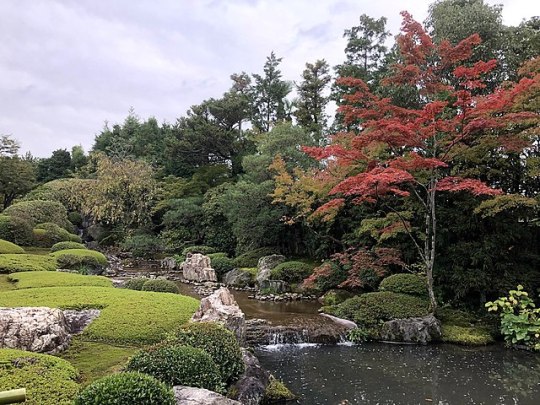
A Healthier Environment: Workers who are able to look out on a greenspace fare better than those who don’t. While virtual reality greenspaces can contribute some benefit, it’s better to go with the real deal, and the more biodiversity, the better. As mentioned earlier, hospitals with greenspace not only improve cognitive performance, but they’re also more pleasing to staff and patients alike. This literature review supports the therapeutic value of healing gardens in hospitals. (Note: These studies often cover both physiological and psychological benefits of greener built environments.)
A Sense of Awe: Nature inspires us to experience deep feelings of awe, which has been shown to improve mental well-being in multiple demographics. This transcendent experience can be incredibly healing and formative. Even better, the experience of feeling awe in nature can lead to more eco-friendly behavior by making people feel more connected to the natural world.
Soft Fascination: This is a term coined by researchers Rachel and Stephan Kaplan to refer to the more relaxed, organic way our attention flows when we are in a nature-dominated environment as opposed to a largely artificial one. A 2019 study demonstrates that it simply takes less mental effort for us to view natural scenes. We also find spending time in nature to be more restorative than watching TV for the same reasons. Also, for the fun of it, here’s a neat study exploring the intersection of soft fascination, sense of humor, and mental well-being.
Resilience: Social distancing due to the COVID-19 pandemic prompted studies on how nature can increase resilience, including this one on urban nature, and another on adolescents’ mental well-being.

Studies showing the benefits of nature are just one step in making use of nature’s restorative properties. One of the themes you’ll run into again and again when exploring this topic is that greenspace is most definitely not evenly distributed, especially in urban areas. Wealthy and privileged communities have disproportionately greater amounts of greenspace compared to socioeconomically disadvantaged ones, which makes the issue of mental health and nature based therapy a social justice issue.
Moreover, many natural places are not accessible to disabled people. A significant lack of infrastructure to get disabled people to these spaces, and then allowing them to explore them as extensively as non-disabled people, means that there is a serious disparity. While there are efforts toward equality in this area as well, there is still plenty of room for improvement.
Finally, nature should not only exist for our benefit, but for its intrinsic value independent of our human agendas and biases. While personal restoration and rejuvenation are certainly good things to enjoy whenever we get the opportunity to go outside, and we shouldn’t feel any guilt or shame for how nature makes us feel better, I think it is very important that we not take our greenspaces for granted, and work to make sure they are preserved and restored for generations to come.
Did you enjoy this post? Consider taking one of my online foraging and natural history classes, checking out my other articles, or picking up a paperback or ebook I’ve written! You can even buy me a coffee here!
#long post#psychology#ecopsychology#ecotherapy#health#nature#forest bathing#shinrinyoku#gardening#outdoors#forests#gardens#mental health#mental illness#depression#anxiety#stress#resilience
493 notes
·
View notes
Note
Hi Charmful, I really love your amazing neighborhood! It is fantastic to see the passion you've put in this project for about 17 (!) years! What advice would you give to someone who wishes to start their own custom hood with many subhoods and stories, like yours? What are in your opinions some do's and don'ts (be it about technicalities, gameplay or even mindset)? Thanks in advance and I apologise if this question has already been asked :)
No! You are completely fine, I appreciate the question. Very few ever ask me questions on my tumblr anyhow. I just go around giving this advice every so often when I see it asked about how to start custom hoods on the big TS2 Facebook Group or the Sims 2 Subreddit, haha!
So, going into your own hood/subhoods project sounds really daunting and it's not a feat for the impatient or those that have a penchant for serial restarting playstyle.
1. Grow it organically. If that seems too loose of a perimeter for someone, they can always use a structured BACC as a springboard. One of my favorite TS2 Twitch streamers, ChocolatCitySim has built her amazing custom hood and subhoods up from a BACC. Here is an album of my hoods and subhoods showing them in 2015 and 2022 and the progress it made and even at present they look different than they did in 2022.
2. Create a solid set of sims or families you want to be the foundation population. They could be founders, you could have a headcanon of why they moved to town, or how they fit into the lore of your custom hood. These sims you will play for a long time, hopefully enough to see their children's children and such. My best advice is aim for 5-8 families and then sprinkle in some YAs (if you add a Uni right off) and single adults that are ready to mingle. Add new families and sims as you progress and as needed to grow your population.
3. Don't be afraid! Why is this important? Because Kashmire wouldn't be what it is today if I had panicked at every glitch, accident, or unintended situation that cropped up. It has actually enhanced my hood lore as the years have gone by. It makes for a unique story twist or quirk when something happens and you have to interpret or explain it away into a narrative or hood canon.
Don't be afraid to start playing before the hood is 'done'; spoiler alert: a custom hood is never 'done' it might have a good few years stretch of you not updating anything in it until you need it but if you are like me and get the urge to go ham on hood deco after 14 or so years, it's gonna always be in flux! Obsessing with getting a custom hood 'done' before playing it is the quickest way to burn out and abandon your goal.
Also, don't be afraid to completely chuck stuff you have downloaded or built and are not feeling anymore. Or re-arranging entire sections of your hood. In real life, civilizations grow and change and seeing that progress in your own neighborhood can be rewarding! You can even send sims you aren't feeling anymore off to another place, or make them townies, or kill them off. I've never played in strict rotation, I've lost sims to glitches, and I've bulldozed more than half my original builds to try and build or download something better.
4. Back to the building of it, I wish I had done it sooner but it's helpful to kind of know what zones of your hood are. Commercial vs Residential, vs greenspace use. Use hood deco to build up parts to make it look busier if you are going for a more urban hood or subhood but don't have a lot of playable lots yet. If you aren't a builder, download lots, there are so many good ones out there!
On the same note of building, try to have your basic necessity community lots in every subhood so the sim doesn't have to travel through 2 screens to get a cup of coffee or go to a gym, but you can vary those community lots unless you want to simulate a 'chain' (a chain of restaurants, gyms, coffee shops).
Then, try to also have some unique places in each subhood. Places your sims might want to go to impress a date, or dancing with friends, fill a want that comes up less often.
I could wax poetic about all the different lots around Kashmire but to not exceed a response character count, I shant.
5. A subtle thing you can do is develop an identity for your different areas/subhoods. You can do this with themes, flora, deco, and even the sims that live there.
6. Let the stories come naturally and retcon what doesn't work anymore. After playing for so many years in Kashmire, stories develop in a variety of ways--most have developed through the gameplay aspect itself mixed with being inspired by lots or poseboxes or just fun scenarios I want to try to play and execute. If you don't have a stellar memory like I do (which is how I keep everything in order) document your play through notes and pics! Even just putting up little blurbs on your tumblr with a few pics can help you start a narrative and then use it to go back to reference. If not here, any blogging site, a forum, or any other place you can post will do!
7. Be choosy with your cc. Things will come along you will WANT but do you really NEED it? This is a good rule of thumb for any Sims 2 player honestly.
8. MAKE BACK UPS. CONSISTENTLY MAKE BACK UPS OF YOUR HOOD AND GAME. RELIGIOUSLY STORE THEM SOMEPLACE SAFE because your heart will break if one day your SSD melts and all your backups were on it and you don't have an amazing computer wizard husband to save your custom hood's ass. People always ask me 'How have you played the same Sims 2 neighborhood for 17 years?!' and my answer: BACK UPS.
That's all I can think of off the top of my mind. Thanks for the question and good luck on your Sims 2 custom hood journey!
13 notes
·
View notes
Text
The Duke of Cornwall during his first official visit to Cornwall since taking on his new role, visited Newquay Orchard, a seven-acre urban greenspace located on Duchy land which provides environmental education, employability training and community events.
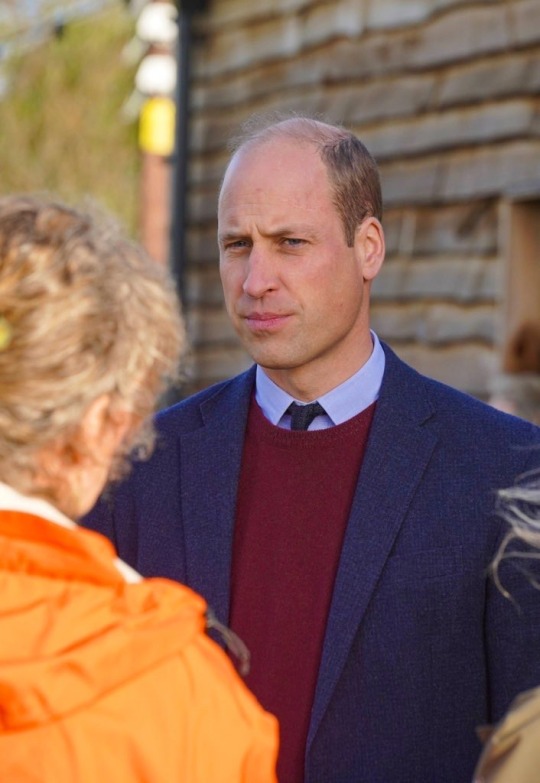
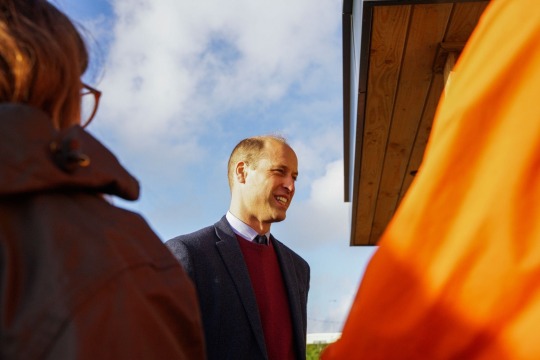








141 notes
·
View notes
Text


The Duke of Cornwall visits Newquay Orchard, a seven-acre urban greenspace located on Duchy of Cornwall land, adjacent to Nansledan, which provides environmental education, employability training and community events, as he makes his first official visit to Cornwall since becoming Duke of Cornwall, in Newquay, Cornwall -November 24th 2022.
#prince william#prince of wales#duke of cornwall#british royal family#england#2022#november 2022#cornwall#cornwall 2022#he looks so happy#he's so cute#the wales#my edit
79 notes
·
View notes
Text
In Appreciation of Montgomery Place for support
In Appreciation of Montgomery Place for support
Montgomery Place: Where Remembrance and Environmentalism Meet
The Montgomery Place Community Association has been a steadfast ally in the preservation of history and the promotion of community engagement. In a gesture of kindness and support, they have offered to help spread awareness about the Saskatoon City Nature Challenge CNC YXE 2024 through…

View On WordPress
#afforstation area#April 27#April 28#April 29#awareness#City Nature Challenge April 26#community#engagement#environment#Friends of the Saskatoon Afforestation Area#George Genereux Afforestation Area#George Genereux Urban REgional Park#Greenspace#Montbomery Place Community Association#Richard St. Barbe Baker AFforestation ARea#Saskatchewan#Saskatoon#support
0 notes
Text
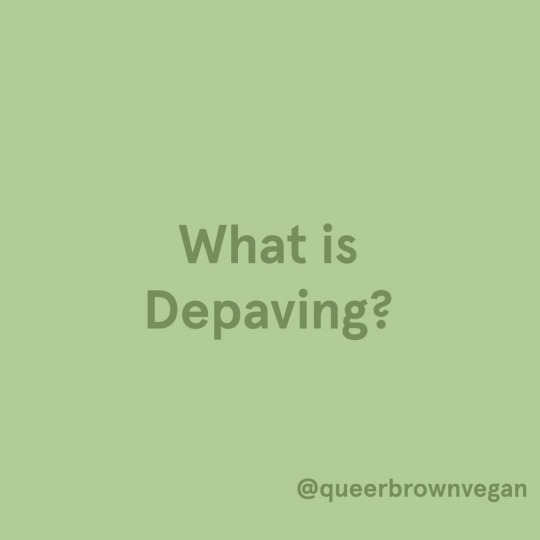
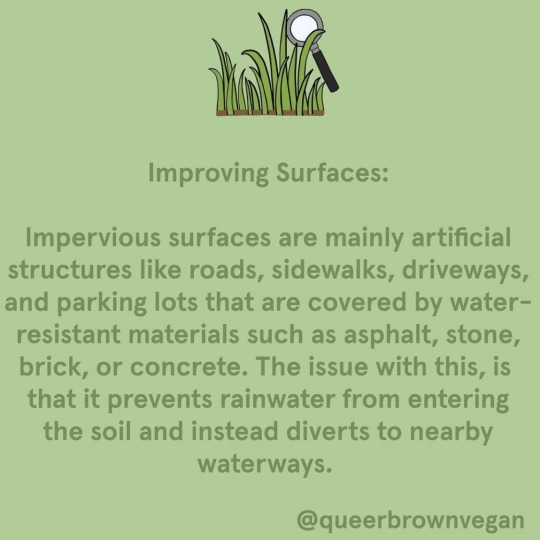

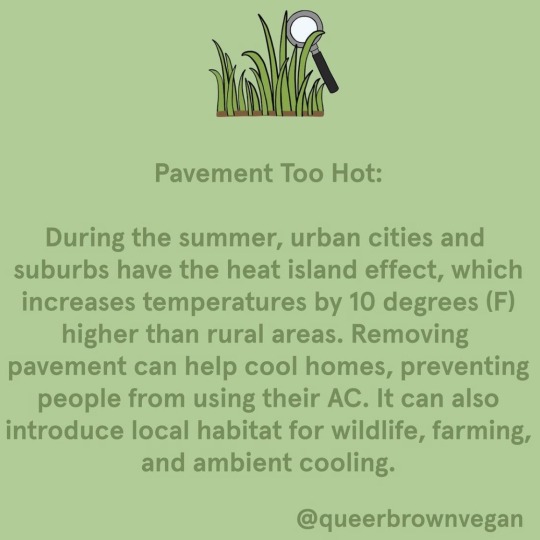

In cities, over half of urban lands are paved for roadways, parking lots, or sidewalks...
What is Depaving?
Depaving looks into removing impervious surfaces made out of either brick, concrete, asphalt, or stone known to prevent rainwater from entering the soil. Because of this, rainwater often concentrates in local waterways and carries a mix of environmental pollutants such as oil, antifreeze, plastics, pesticides, and heavy metals from the roads and sidewalks directly into rivers or streams. Reducing the environmental impact in local communities is essential in the way infrastructure is being developed, so people (rightly) suggest depaving the structures. While sidewalks and roadways are critical for transport they should be reexamined. We need areas to still be accessible to people with disabilities, but we can look into different sectors to depave our areas.
For many low-income communities of color, there is already a lack of green spaces available, contributing to the increase in temperatures. With pavement, during the summertime, the heat island effect increases temperature by around 5-10 degrees in surrounding areas, which fuels the demand for energy usage (air conditioning). By presenting opportunities for pavement removal, it can provide some forms of greenspaces with trees and plants.
What are the benefits of depaving?
Decrease demand for energy usage, cooling of homes by providing shading, visual privacy, and reduction of noise pollution—the restoration of local habitats for birds, insects, and wildlife.
Things we should consider:
Lack of accessibility of designs for people with disabilities, especially those with wheelchairs which we must champion for those with disabilities to have the right to design infrastructure. We live in an ableist society. Depaving must be done in a way that doesn't perpetuate the issue.
#queerbrownvegan#environment#environmentalism#activism#ableism#accessibility#environmental justice#social justice#social activism#environmental activism#climate change#climate crisis#education#blog#sustainability#sustainable design
88 notes
·
View notes
Text


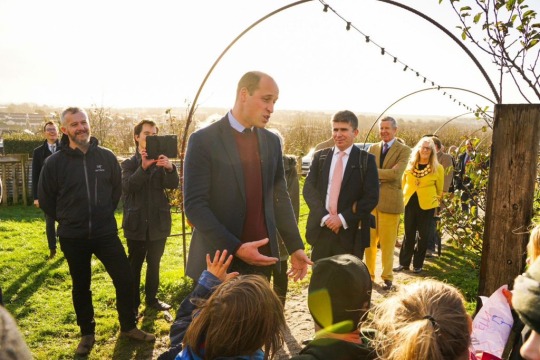

The Duke of Cornwall visits Newquay Orchard, a seven-acre urban greenspace located on Duchy land which provides environmental education, employability training and community events. This is the Duke’s first official visit to the Duchy of Cornwall since receiving the title | November 24th, 2022
9 notes
·
View notes